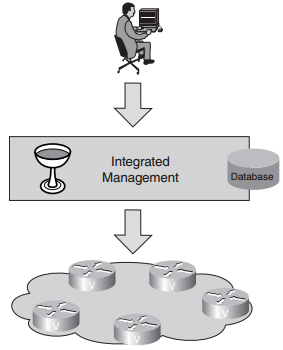Cisco Network Mgmt Protocol FAQ: Management Integration
Q1. Imagine that you are a service provider. An equipment vendor offers you an integrated management system. Which aspects of management integration will such a system be unlikely to address, even if the equipment vendor’s claims are, from his perspective, entirely correct?
Q2. Which factor has perhaps the most significant impact on management complexity?
Q3. Provide an example of how management integration as a technical issue mirrors management integration as an organizational issue.
Q4. Give three examples of management application infrastructure that is commonly provided by management platforms.
Q5. Why can functional overlap between management applications in an operational support environment be a problem?
Answer: It violates the principle that there should be clear ownership for different functions. As a result, information between applications might be harder to synchronize and problems might be harder to troubleshoot because it will be harder to trace requests to their source.
Q6. Provide two examples of technical obstacles that can increase a management solution’s footprint.
Q7. Which industry consortium concerns itself with the standardization of interfaces between management systems in operations support environments?
Q8. Contrast shallow with deep integration of applications at the user interface level.
Q9. Name three ways in which complexity that is caused by heterogeneity can be reduced.
Q10. How do cookie-cutter deployments make network management easier? Are there any downsides?
More Resources
